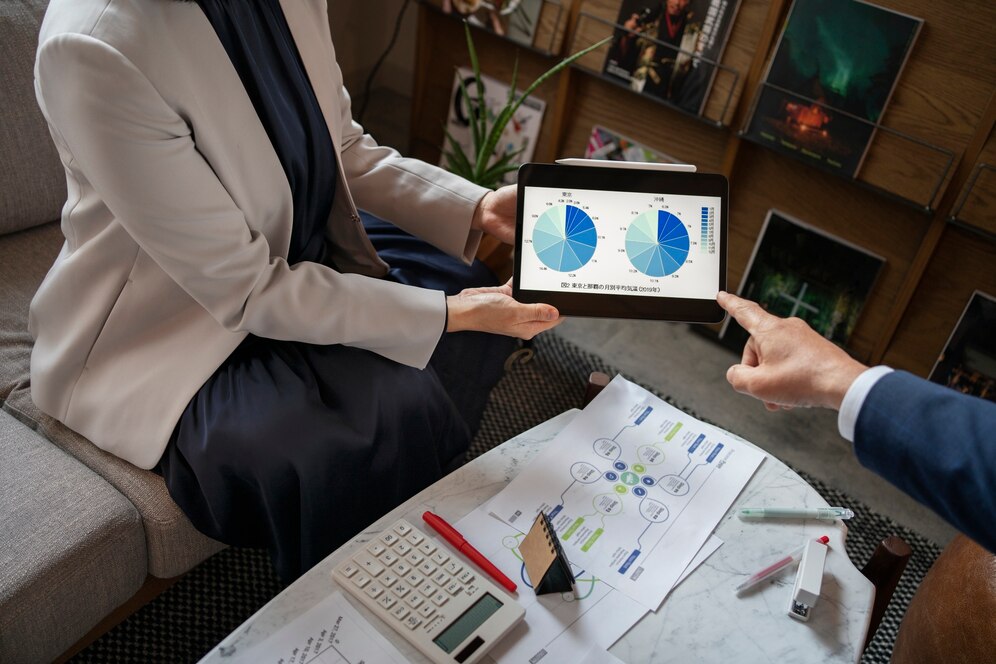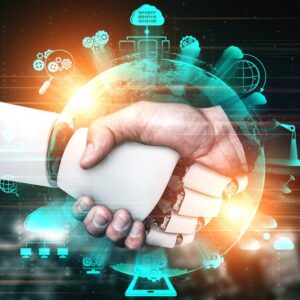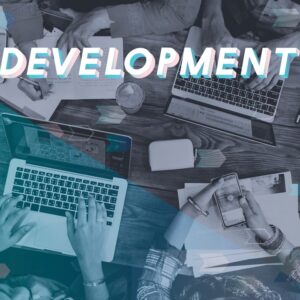In today’s digital age, the term “datafication” has gained significant prominence. But what exactly does it mean? Let’s delve into this concept to understand its implications and applications in various fields.

What Is Datafication
Datafication is the process of turning various aspects of life into data. Imagine taking something that’s not digital, like how many times you visit a coffee shop in a month, and turning it into digital information that computers can understand. It’s like changing something from paper into a computer file. This data can then be analyzed and used to make decisions.
For example, if a coffee shop collects data on how often people come in and what they buy, they can use that information to improve their services or create targeted marketing campaigns. Datafication is becoming more common as technology advances and we find new ways to collect and use data in our everyday lives.
The Process of Datafication
The process of datafication involves several steps that transform analog information into digital data that can be analyzed and used for various purposes. Here’s how it typically works:
Data Collection
The first step in datafication is gathering information. This can include anything from consumer preferences to environmental measurements. Data can be collected through various means such as sensors, surveys, or online interactions.
Data Storage
Once collected, the data needs to be stored in a digital format. This often involves using databases or cloud storage services to organize and manage the vast amounts of information.
Data Processing
Data processing involves cleaning and organizing the collected data to make it suitable for analysis. This may include removing errors or inconsistencies, standardizing formats, and structuring the data in a way that allows for meaningful insights to be derived.
Data Analysis
With the data prepared, it can then be analyzed using various techniques such as statistical analysis, machine learning, or data mining. The goal of analysis is to uncover patterns, trends, or correlations within the data that can inform decision-making.
Insights and Decision-Making
Once analyzed, the insights derived from the data can be used to inform decision-making processes. This could involve anything from optimizing business operations to improving customer experiences.
Feedback Loop
Datafication often involves a feedback loop, where the results of decision-making are used to refine and improve future data collection and analysis processes. This iterative cycle helps organizations continuously improve their data-driven strategies.
Overall, the process of datafication enables organizations to leverage the power of data to gain valuable insights, make informed decisions, and drive innovation in various fields.
10 Inspiring Examples of the Power of Datafication
Here are ten inspiring examples of how datafication has demonstrated its power in various aspects of our lives:
Datafication in Transforming Healthcare
Wearable fitness trackers and health monitoring devices collect data on users’ physical activities, heart rates, and sleep patterns, empowering individuals to take proactive steps towards improving their health.
Datafication Process in the Concept of Smart Cities
Urban datafication initiatives utilize sensors and data analytics to optimize transportation systems, reduce energy consumption, and enhance public safety, making cities more efficient and livable for residents.
Datafication in Personalized Medicine
Datafication enables healthcare providers to analyze large datasets of patient information to tailor treatment plans and medications to individual needs, improving patient outcomes and reducing healthcare costs.
Datafication in Financial Services
Banks and financial institutions use datafication to analyze customer spending patterns and credit histories, enabling them to offer personalized financial products and services that better meet customers’ needs.
Datafication in E-commerce
Online retailers leverage datafication to analyze customer browsing and purchasing behavior, providing personalized product recommendations and targeted marketing campaigns to enhance the shopping experience and increase sales.
Datafication in and of Education
Learning analytics platforms collect and analyze data on students’ performance and engagement, enabling educators to identify areas for improvement and tailor instruction to meet individual learning needs, thereby improving student outcomes.
Datafication in Environmental Conservation
Environmental monitoring sensors collect data on air and water quality, biodiversity, and climate conditions, helping scientists and policymakers make informed decisions to protect and preserve natural resources.
Datafication in Supply Chain Management
Datafication allows companies to track and analyze every step of the supply chain, from production to distribution, enabling them to optimize inventory management, reduce waste, and improve efficiency.
Datafication in Social Media
Social media platforms use datafication to analyze user interactions and preferences, delivering personalized content and advertisements that keep users engaged and connected.
Datafication in Entertainment
Streaming services like Netflix and Spotify use datafication to analyze user viewing and listening habits, providing personalized recommendations and curated playlists that enhance the entertainment experience.
These examples illustrate the transformative potential of datafication in revolutionizing various aspects of our lives, from healthcare and education to commerce and entertainment. By harnessing the power of data, we can unlock new opportunities for innovation, efficiency, and personalization in a wide range of fields.
Advantages and Disadvantages of Datafication
Let’s explore the advantages and disadvantages of datafication:
Advantages of Datafication
Informed Decision Making: Datafication provides businesses with valuable insights derived from data analysis, enabling them to make informed decisions and strategies.
Improved Efficiency: By analyzing data, businesses can identify inefficiencies in their processes and operations, leading to increased efficiency and cost savings.
Personalized Experiences: Datafication allows businesses to personalize their products and services based on customer preferences, enhancing the overall customer experience.
Predictive Analytics: By analyzing historical data, businesses can predict future trends and behaviors, helping them to anticipate market changes and stay ahead of the competition.
Innovation: Datafication fuels innovation by uncovering new opportunities and insights, enabling businesses to develop new products, services, and business models.
Disadvantages of Datafication
Privacy Concerns: Datafication raises privacy concerns as businesses collect and analyze large amounts of personal data, leading to potential breaches of privacy and data misuse.
Security Risks: Storing and processing large amounts of data poses security risks, as businesses become targets for cyberattacks and data breaches, compromising sensitive information.
Data Bias: Datafication can lead to biases in data analysis, as algorithms may be influenced by underlying biases in the data or the way it is collected, potentially resulting in unfair or discriminatory outcomes.
Over-reliance on Data: Businesses may become overly reliant on data-driven decision-making, overlooking qualitative factors and human judgment, which can lead to suboptimal decisions.
Digital Divide: Datafication may exacerbate existing inequalities, as individuals or communities with limited access to technology or digital skills may be excluded from the benefits of data-driven innovation.
History of Datafication
The history of datafication can be traced back to the early days of computing and information technology. As computers became more sophisticated and capable of processing vast amounts of data, the concept of transforming analog information into digital data began to emerge.
In the mid-20th century, with the advent of mainframe computers and electronic data processing systems, organizations started to digitize their records and operations. This marked the initial stages of datafication, as businesses and governments sought to streamline their processes and improve efficiency by storing and processing information in digital formats.
The proliferation of personal computers in the 1980s and 1990s further accelerated the datafication trend, enabling individuals and organizations to collect, store, and analyze data more effectively. The rise of the internet and the World Wide Web in the late 20th century further expanded the scope of datafication, as the digitization of communication, commerce, and entertainment activities generated vast amounts of data that could be mined for insights and value.
In the early 21st century, the emergence of big data technologies and analytics platforms revolutionized the field of datafication, allowing organizations to collect, process, and analyze massive datasets in real-time. This led to the rise of data-driven decision-making, where organizations rely on data and analytics to inform strategic initiatives, optimize operations, and drive innovation.
Today, datafication is ubiquitous in nearly every aspect of modern life, from healthcare and finance to education and entertainment. The continued advancement of technology, coupled with the proliferation of internet-connected devices and sensors, ensures that the volume and variety of data will only continue to grow exponentially in the years to come.
Future of Datafication and Why is it the Future of Business
The future of datafication holds immense promise for businesses across various industries, and here’s why:
Data-driven Decision Making
Datafication enables businesses to make informed decisions based on real-time insights derived from vast amounts of data. By leveraging advanced analytics and machine learning algorithms, organizations can identify trends, predict customer behavior, and optimize operations to stay competitive in today’s fast-paced business landscape.
Personalization and Customer Experience
Datafication allows businesses to personalize products, services, and marketing efforts to meet the unique needs and preferences of individual customers. By analyzing customer data, businesses can deliver targeted recommendations, tailored experiences, and proactive support, fostering stronger customer relationships and loyalty.
Operational Efficiency and Cost Savings
By streamlining processes, optimizing resource allocation, and identifying areas for improvement, datafication helps businesses enhance operational efficiency and reduce costs. From supply chain management to inventory optimization, data-driven insights enable organizations to optimize performance and maximize profitability.
Innovation and Growth Opportunities
Datafication fuels innovation by uncovering new insights, identifying emerging trends, and facilitating experimentation. By harnessing the power of data, businesses can identify untapped market opportunities, develop innovative products and services, and drive growth in new directions.
Competitive Advantage
In today’s digital economy, data has become a valuable asset that can provide a competitive advantage. Businesses that effectively harness datafication to inform strategic decision-making, drive innovation, and deliver superior customer experiences are better positioned to outperform competitors and thrive in the marketplace.
Legal Aspects of Datafication
The legal aspects of datafication encompass a range of laws, regulations, and ethical considerations aimed at protecting individual rights, ensuring data privacy, and promoting responsible use of data in various contexts. In the United States, several key legal frameworks and principles govern the collection, storage, and processing of personal data:
Privacy Laws
The United States lacks a comprehensive federal privacy law, but several state-level regulations, such as the California Consumer Privacy Act (CCPA) and the Virginia Consumer Data Protection Act (CDPA), impose requirements on businesses regarding the collection, use, and disclosure of personal information.
Healthcare Regulations
The Health Insurance Portability and Accountability Act (HIPAA) sets standards for the protection of sensitive health information and imposes strict requirements on healthcare providers, health plans, and other entities handling medical data.
Financial Regulations
The Gramm-Leach-Bliley Act (GLBA) and the Fair Credit Reporting Act (FCRA) regulate the collection and use of financial and credit information by financial institutions and credit reporting agencies, respectively.
Consumer Protection Laws
The Federal Trade Commission (FTC) Act prohibits unfair or deceptive practices related to consumer data, giving the FTC authority to enforce privacy and data security standards.
Data Breach Notification Laws
Many states have enacted laws requiring businesses to notify individuals in the event of a data breach involving their personal information, thereby promoting transparency and accountability in data security practices.
Digital Rights
The Electronic Communications Privacy Act (ECPA) and the Computer Fraud and Abuse Act (CFAA) protect individuals’ electronic communications and address unauthorized access to computer systems and data.
Intellectual Property Laws
Copyright, trademark, and patent laws protect intellectual property rights related to data, software, and digital content, safeguarding creators’ rights and promoting innovation.
In addition to legal frameworks, ethical considerations play a crucial role in shaping responsible datafication practices. Organizations are increasingly expected to adhere to principles of transparency, consent, fairness, and accountability when collecting and processing data. Adopting privacy-by-design principles, implementing robust data security measures, and providing individuals with control over their personal information are essential elements of ethical data management practices.
Overall, navigating the legal landscape of datafication requires a comprehensive understanding of relevant laws, regulations, and ethical standards to ensure compliance, mitigate risks, and uphold individuals’ rights and privacy in an increasingly data-driven world.
Conclusion
In conclusion, datafication represents a transformative force that permeates every aspect of our lives. While it offers unprecedented opportunities for innovation and progress, it also presents complex challenges regarding privacy, ethics, and societal impact. By understanding and navigating the dynamics of datafication, we can harness its potential to create a more inclusive, equitable, and sustainable future.
Thank you for actively engaging with the content shared on this blog. Feel free to regularly explore the great info provided on the website for the latest technology trends. Wishing you a wonderful day ahead!
Frequently Asked Questions
Q. What is the difference between datafication and digitization?
Datafication involves transforming various aspects of life into quantifiable data for analysis, while digitization refers to converting analog information into digital formats. In simpler terms, datafication is about turning everyday activities into data points, while digitization is about making information digital.
Q. How does datafication impact privacy and security?
Datafication can impact privacy and security by increasing the risk of unauthorized access to personal data. As more information is collected and analyzed, individuals’ privacy may be compromised if proper safeguards are not in place.
Additionally, the storage and processing of large datasets pose security risks, as businesses become targets for cyberattacks and data breaches. It’s crucial to implement robust security measures and adhere to privacy regulations to mitigate these risks and protect individuals’ sensitive information.
Q. What are some inspiring examples of the power of datafication?
Some inspiring examples of the power of datafication include personalized medicine, where patient data is analyzed to tailor treatment plans; smart cities, using data analytics to optimize urban infrastructure; and predictive analytics in finance, helping businesses anticipate market trends.
Additionally, data-driven education platforms personalize learning experiences, while data analytics in healthcare improves patient outcomes. These examples illustrate how datafication empowers individuals, enhances efficiency, and drives innovation across various sectors.
Q. What role does datafication play in shaping urban development?
Datafication plays a crucial role in shaping urban development by enabling data-driven decision-making and optimizing city infrastructure. Through the analysis of data from various sources such as sensors and IoT devices, urban planners can identify patterns, predict trends, and optimize resource allocation. This leads to improved efficiency, sustainability, and livability in cities, ultimately enhancing the quality of life for residents.
Q. How can individuals enhance their digital literacy skills in the age of datafication?
Individuals can enhance their digital literacy skills in the age of datafication by seeking out resources such as online courses, tutorials, and workshops that cover topics like data analysis, data visualization, and cybersecurity.
Additionally, staying informed about emerging technologies and trends in data science and technology can help individuals stay ahead in the rapidly evolving digital landscape. Practicing critical thinking and skepticism when encountering online information is also essential for navigating data-rich environments effectively.





